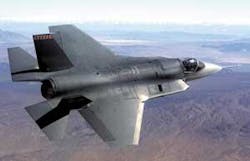The following is a discussion with BAE Systems North America’s corporate leadership on the defense electronics industry.
Q: What is the current outlook for the U.S. defense electronics market in terms of growth for the next five to 10 years?
A: Command, control, communications, computers, intelligence, surveillance, reconnaissance (C4ISR) funding, specifically the communications and sensor systems areas, appears poised for some budget growth over that period despite the anticipated overall trend of decreased funding. That’s because of the emphasis on transformation to the network-centric enterprise and the need for a common operational picture. However, in tracking U.S. Department of Defense and congressional discussions on the future years defense program (FYDP), it appears defense electronics market funding will tend to track with what happens in the larger defense budget, which is currently showing a slightly decreasing trend.
Q: What areas is BAE Systems focusing on during that time? What is your roadmap?
A: BAE Systems capabilities in communications, RF sensors, and surveillance and reconnaissance match up well with the growing C4ISR market segment. We purposely consolidated those capabilities in a recent reorganization into the Electronics and Integrated Solutions Operating Group. Now those strengths can be better combined to offer integrated solutions to today’s warfighters who are operating in an increasingly network-centric fashion. Our strengths in systems that support military platforms will address both new and upgraded capabilities on existing and future military platforms.
Q: What is the BAE Systems role on the Joint Strike Fighter (JSF) program?
A: During the system development and demonstration (SDD) phase of the F-35 Joint Strike Fighter program, BAE Systems is focused on two areas: airframe and mission systems. A major part of the United Kingdom industrial contribution to JSF will come from BAE Systems aircraft manufacturing facilities in Warton and Samlesbury, and from facilities at Rochester and Edinburgh. BAE Systems facilities in Nashua, N.H., and Johnson City, N.Y., also play a significant role. The aft fuselage and empennage (tails and fins) for each F-35 JSF are being designed, engineered and built at the BAE Systems Samlesbury site.
The company oversees the F-35’s Electronic Warfare (EW) systems suite and is providing advanced affordable low observable apertures and advanced countermeasure systems. We’re also providing critical components for the vehicle and weapon systems, in particular the fuel system, crew escape, life support system, and prognostics health management integration. The company has significant work share in autonomic logistics, primarily on the support system side, and is involved in the integrated test force, including the systems flight test and mission systems. Additionally, BAE Systems is supplying the vehicle management computer, the communication, navigation, and identification (CNI) modules, the active stick and throttle and the electro-optical targeting system (EOTS) laser subsystem.
Q: What major technology innovations have come out of the work on the Joint Strike Fighter?
A: The F-35 JSF will set new standards for assembly precision and pace. New milling machines and innovative precision machining techniques ensure that the F-35 meets its stealth requirement. This accuracy is achieved through digital design and manufacturing controls pioneered by BAE Systems. During full-rate production, assembly time for a JSF is expected to be less than half that of current-generation fighters.
The BAE Systems experience in short takeoff and vertical landing (STOVL) from the Harrier program as well as in advanced lean-manufacturing technology from its facilities at Warton and Samlesbury also play a significant role.
Q: What is the best way for suppliers that are new to the defense market to get their products and designs in front of the right decision makers at BAE Systems?
A: U.S. companies, particularly small businesses, should contact the Small Business Liaison officers located across the country for information on site procurements and the qualifications needed to bid on BAE Systems requirements. The contact information is available on the BAE Systems Web site www.na.baesystems.com/supplierDiversity.cfm
Q: Are any BAE Systems electronic warfare solutions playing a role in the war on terror? Is there substantial funding coming out of the U.S. Department of Homeland Security (DHS) for electronics?
A: BAE Systems solutions have played an ongoing role in the war on terror, both in the civil and military arenas. Of particular note is BAE Systems participation in the DHS Counter Man-Portable Air Defense Systems (Counter-MANPADS) system design and development program to defeat multiple missile threats against a commercial aircraft. JETEYE, a laser-based infrared countermeasures system, is scheduled to complete system performance flight testing by the end of the year and DHS is expected to provide its findings and recommendations to the Administration in January 2006.
In the military arena, several technology demonstrations are under way, including a teaming effort with the Marine Corps Warfighting Laboratory to counter rocket-propelled grenades launched against light armored vehicles. BAE Systems also performs work of a sensitive nature for DHS and other government customers that is directly relevant to the war on terror. These programs involve surveillance, signals, intelligence and intelligence operations.
In addition, we are providing the electronic countermeasures suite for the U.S. Air Force’s F-22 Raptor aircraft and the company is the lead electronic warfare system integrator for the F-35 Joint Strike Fighter. Our Integrated Defensive Electronic Radio Frequency Countermeasures (IDECM) system protects U.S. Navy F/A-18E/F aircraft against radar-guided missiles. The Advanced Threat Infrared Countermeasures (ATIRCM) is the next-generation, directable, laser and lamp-based countermeasure that protects aircraft against heat-seeking missile threats-and the advanced sensors in the ATIRCM’s counterpart Common Missile Warning System (CMWS) provide missile-warning capabilities.




